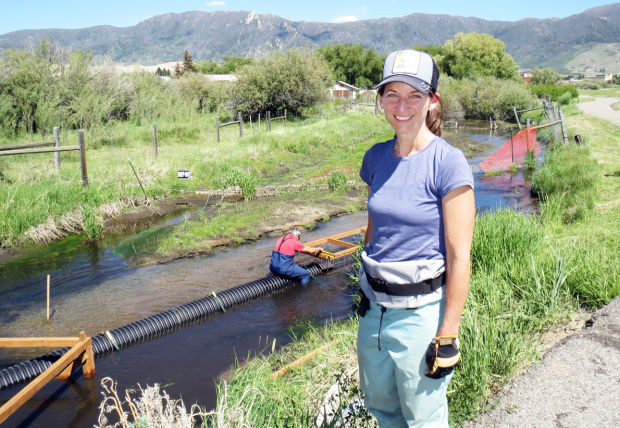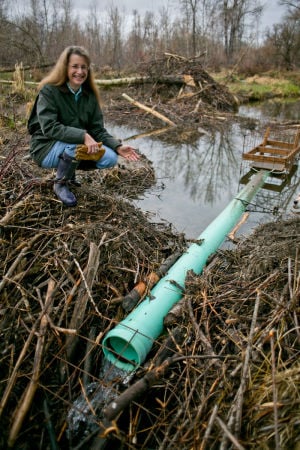You’ll be happy to know there was lots of follow-up to yesterday’s post about Dr. Maughan’s article proposing beaver re-introduction as a partial solution to reduce wildfires. He wrote me himself and thanked me for the comments on his article, and I’m hoping to get him invited to the next beaver conference. Meanwhile I got these comments from Amy Chadwick who was less than rosy about the idea. Remember she’s the one who is working with Skip Lisle installing flow devices in Montana. She did eventually agree that we need an intermountain area beaver conference soon where everyone can talk over these ideas.
 I’m not sure there’s a lot of merit to what he’s saying, at least for western landscapes, especially in mountainous terrain. I could see in some wide valleys where beaver have been removed, conifers are encroaching, and the area hasn’t already been cleared for development, that beavers could make a difference, but any effects from more beaver would probably be pretty localized, and in large fires that isn’t enough. A burning ember can travel up to a mile, they say. One could even make the case that increased humidity may increase growth of trees near the stream corridor, increasing fuels.
I’m not sure there’s a lot of merit to what he’s saying, at least for western landscapes, especially in mountainous terrain. I could see in some wide valleys where beaver have been removed, conifers are encroaching, and the area hasn’t already been cleared for development, that beavers could make a difference, but any effects from more beaver would probably be pretty localized, and in large fires that isn’t enough. A burning ember can travel up to a mile, they say. One could even make the case that increased humidity may increase growth of trees near the stream corridor, increasing fuels.
 My point is, it’s probably over-simplified and definitely optimistic.
My point is, it’s probably over-simplified and definitely optimistic.
In my work this summer I have been looking at the other end of this issue, and seeing where fire suppression has been allowing too dense tree growth, conifer encroachment, and eventual drying up of headwaters, as well as shading out willows and aspen, so beaver don’t have the food they need to move back in even if there still were adequate flow. I have seen lots of areas with signs of historic beaver activity where there’s no longer any water, and some struggling or dead aspen or willows left under a conifer canopy. A lot of our headwaters are drying up. I have also seen a case where aspen re-sprouted everywhere and the stream started flowing again within 3 years of a big burn. We need more fire on our forests, in a big way. Most of the forest management budget goes toward fighting fire in the urban interface where people build homes. According to one model we need to thin and burn 20% of the forest for the next 10 years to restore balance. So stopping fires is the wrong goal.
Massive fires are the new norm due to a century of fire suppression and poor forest management. What beaver ponds CAN do is improve habitat and critter population resiliency under fire, and trap the increased sediment and mitigate flood flows after forest fires. The huge floods in Boulder after the fires the previous year probably would not have been nearly as severe if the wetlands in the headwaters had been intact. They probably still would have flooded where they built within the greater floodplain, but you know… that’s another issue.
Well, that’s certainly another perspective on the issue. More fires not less? I daresay that’s an opinion that would get even less public approval than beavers! Especially right now after the recent Yosemite and Idaho fires. Thanks Amy for your thought-provoking remarks, and don’t ever say we’re a monotheistic society here at beaver central.
Now onto a nice, (if somewhat invasive) look at the free beavers of the river Tay. I bet these beavers keep telling themselves it’s [slightly] better than being dead.











































